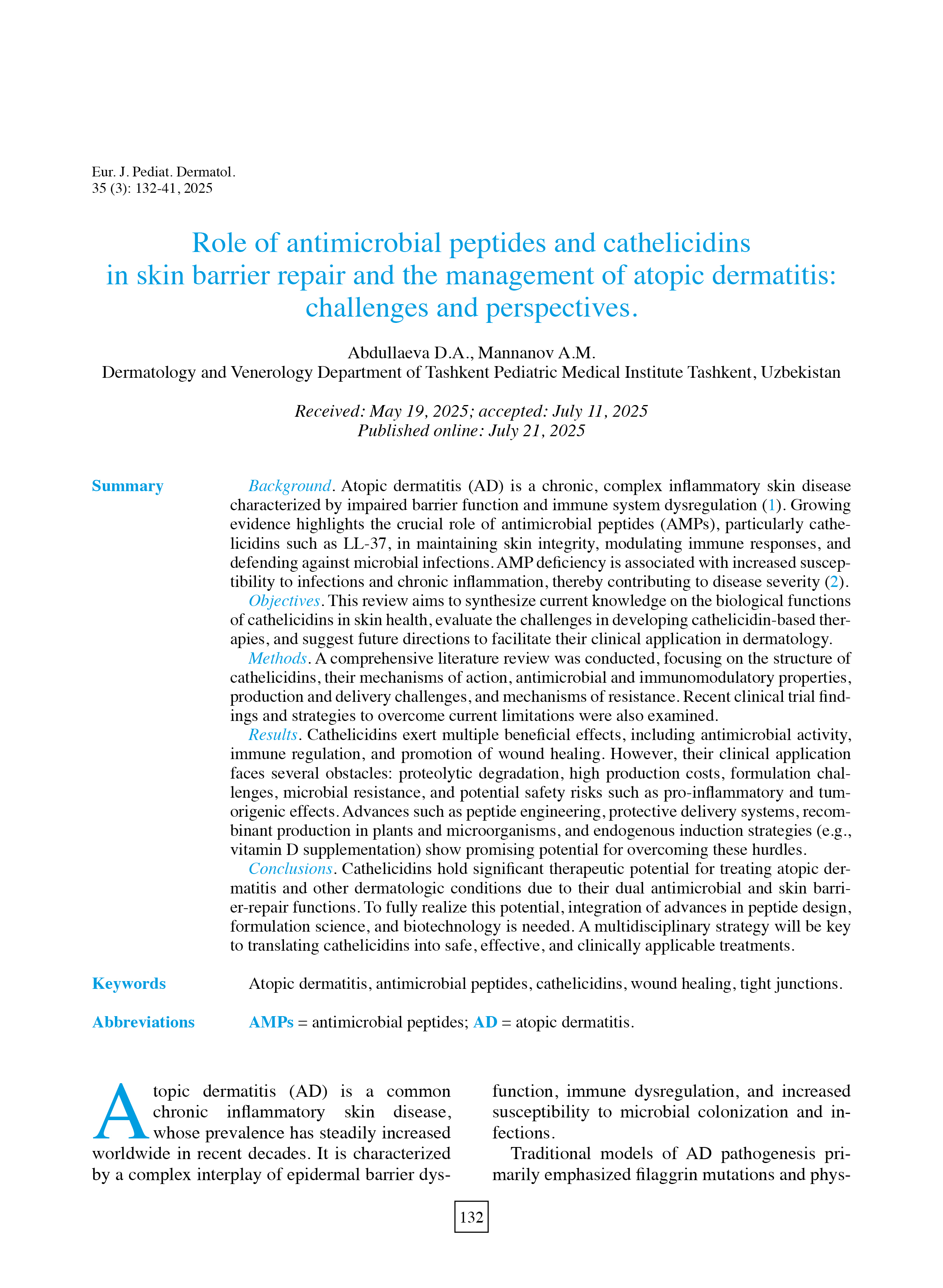Role of antimicrobial peptides and cathelicidins in skin barrier repair and the management of atopic dermatitis: challenges and perspectives.

Downloads
DOI:
https://doi.org/10.26326/2281-9649.35.3.2806How to Cite
Abstract
Background. Atopic dermatitis (AD) is a chronic, complex inflammatory skin disease characterized by impaired barrier function and immune system dysregulation (1). Growing evidence highlights the crucial role of antimicrobial peptides (AMPs), particularly cathelicidins such as LL-37, in maintaining skin integrity, modulating immune responses, and defending against microbial infections. AMP deficiency is associated with increased susceptibility to infections and chronic inflammation, thereby contributing to disease severity (2).
Objectives. This review aims to synthesize current knowledge on the biological functions of cathelicidins in skin health, evaluate the challenges in developing cathelicidin-based therapies, and suggest future directions to facilitate their clinical application in dermatology.
Methods. A comprehensive literature review was conducted, focusing on the structure of cathelicidins, their mechanisms of action, antimicrobial and immunomodulatory properties, production and delivery challenges, and mechanisms of resistance. Recent clinical trial findings and strategies to overcome current limitations were also examined.
Results. Cathelicidins exert multiple beneficial effects, including antimicrobial activity, immune regulation, and promotion of wound healing. However, their clinical application faces several obstacles: proteolytic degradation, high production costs, formulation challenges, microbial resistance, and potential safety risks such as pro-inflammatory and tumorigenic effects. Advances such as peptide engineering, protective delivery systems, recombinant production in plants and microorganisms, and endogenous induction strategies (e.g., vitamin D supplementation) show promising potential for overcoming these hurdles.
Conclusions. Cathelicidins hold significant therapeutic potential for treating atopic dermatitis and other dermatologic conditions due to their dual antimicrobial and skin barrier-repair functions. To fully realize this potential, integration of advances in peptide design, formulation science, and biotechnology is needed. A multidisciplinary strategy will be key to translating cathelicidins into safe, effective, and clinically applicable treatments.
